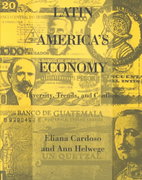Question
CH 12 1. Establishing a new drug in the market. Bhattacharya and Vogt (2003) study the pricing strategies of pharmaceutical companies that bring new drugs
CH 12
1. Establishing a new drug in the market. Bhattacharya and Vogt (2003) study the pricing strategies of pharmaceutical companies that bring new drugs to market. They observe that new drugs often debut at relatively low prices and get more expensive over time. They interpret this strategy as an attempt by the drug company to establish its drug in the minds of doctors and patients before trying to extract monopolistic profits.
Recall our fictional drug for carpal tunnel syndrome called BHTn1 which was introduced in Section 12.1.
(a)Suppose demand for the new drug is
Q = 1000 - P
Where P is the price that the monopolistic firm sets.
What price will the firm choose to maximize profits = PQ?
We assume the cost of producing the drug is negligible throughout this problem.
Hint: We first write profit in terms of P
CH 13.
2. Suppose that your utility function over health care (h) and other goods (c) is given by U(h, c) and that you have a fixed incomeof $100.
Each year, you choose h and c to maximize your utility subject to a budget constraint:
phh + pcc = Y
Where, ph is the price of health care, pc is the price of other goods, and Y is your income.
In year 1, the price of health care is $1, while the price of other goods is $2. At these prices, you demand 30 units of health care and 35 units of other goods.
In year 2, your utility function and your income do not change, but prices do. Health care becomes more expensive at $1.50, while other goods become cheaper at $1.50. At these prices, you demand 20 units of health care.
(a) Assuming you spend all your income in year 2, how many units of other goods do you buy?
(b) Use this budget constraint to calculate the Laspeyeres price index; that is, the amount of money you need to buy the Year 1 bundle in Year 2, divided by the money you paid for it in Year 1.
3. The fact that total expenditures on heart attack care increased between 1984 and 1991 is good evidence the price of surviving a heart attack increased.
(TRUE/FALSE, Comment why?)
CH 15 - (TRUE/FALSE, Comment why?)
4. If members of a society have transitive preferences, then that society as a whole must also have transitive preferences.
5. A country operating below its own health production frontier is said to be productively inefficient.
6. If a country is productively efficient and hence on its own health production frontier, it is spending the optimal amount of money on health care.
CH 18
7. In employer-sponsored health insurance in the U.S., employers pay the largest
share of the costs of health insurance.
(TRUE/FALSE, Comment why?)
8. In the U.S., where most private health insurance coverage is provided by employers, changing employers nearly always means changing health insurance providers. Review the definition of job lock from Section 18.1.
(a) Why might the health insurer at a new job balk at providing insurance to a job-switching employee, or charge a high price?
(b) Explain why the health insurer at the old job would not also drop coverage or charge a higher price in any given year. Hint: Discuss the observability of any changes to the employee by insurers and legal restrictions.
Step by Step Solution
There are 3 Steps involved in it
Step: 1

Get Instant Access to Expert-Tailored Solutions
See step-by-step solutions with expert insights and AI powered tools for academic success
Step: 2

Step: 3

Ace Your Homework with AI
Get the answers you need in no time with our AI-driven, step-by-step assistance
Get Started


